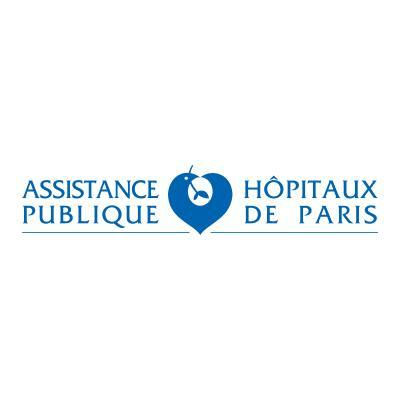预约演示
更新于:2025-05-07
Centre Hospitalier Departemental Vendee
France
France
更新于:2025-05-07
概览
关联
77
项与 Centre Hospitalier Departemental Vendee 相关的临床试验NCT06263816
Effect of Long-term Carvedilol to Prevent Decompensation or Death in Patients With Asymptomatic Child-Pugh A5 to B8 Cirrhosis and Clinically Significant Portal Hypertension: a Multicenter Double-blind Randomized Control Trial
Decompensation of cirrhosis is a turning point in cirrhosis course, as associated with a marked decrease in life expectancy. Thus, prevention of decompensation is crucial.
The usefulness of carvedilol to prevent decompensation of cirrhosis in patients with TE-LSM ≥ 25 kPa as a surrogate marker for clinically significant portal hypertension, has never been evaluated in a clinical trial.
The usefulness of carvedilol to prevent decompensation of cirrhosis in patients with TE-LSM ≥ 25 kPa as a surrogate marker for clinically significant portal hypertension, has never been evaluated in a clinical trial.
开始日期2024-11-15 |
申办/合作机构 |
NCT06632691
Virtual Reality Headset and Acceptability of Rectosigmoidoscopy in Ulcerative Colitis: a Randomised Controlled Trial
Haemorrhagic rectocolitis is an inflammatory bowel disease that continuously affects the rectum and colon, with lesions that extend variably from the rectum into the upstream colon. This disease requires repeated assessment of both clinical activity (transcribed by the clinical Mayo score) and endoscopic activity. ACCEPT study showed that the acceptability of rectosigmoidoscopy is low, and the main determinants of this low acceptability were pain and bloating (51%) and embarrassment during the examination (30%).
Virtual reality headsets has analgesic and anxiolytic properties, thanks to specially designed virtual environments that apply different principles such as medical hypnosis, music therapy and cardiac coherence to enhance therapeutic action.
The aim of our project is to study the benefit of medical hypnosis provided by the use of a virtual reality headset in terms of tolerance of lower digestive endoscopy in patients with ulcerative colitis.
Virtual reality headsets has analgesic and anxiolytic properties, thanks to specially designed virtual environments that apply different principles such as medical hypnosis, music therapy and cardiac coherence to enhance therapeutic action.
The aim of our project is to study the benefit of medical hypnosis provided by the use of a virtual reality headset in terms of tolerance of lower digestive endoscopy in patients with ulcerative colitis.
开始日期2024-10-09 |
NCT06376981
Benefit of a Subacromial Injection Combining Corticosteroid and Hyaluronic Acid Versus Corticosteroid Alone in Supraspinatus Tendinopathy
Multicentric, randomised study to compare the effectiveness on activity pain at 3 months of corticosteroid injection associated with hyaluronic acid with corticosteroids injection alone in patients with tendinopathy of the supraspinatus with clinical reevaluation at one, three and six months.
开始日期2024-09-19 |
100 项与 Centre Hospitalier Departemental Vendee 相关的临床结果
登录后查看更多信息
0 项与 Centre Hospitalier Departemental Vendee 相关的专利(医药)
登录后查看更多信息
16
项与 Centre Hospitalier Departemental Vendee 相关的文献(医药)2019-10-15·JAMA
The SEPSIS-ACT Randomized Clinical Trial
Article
作者: Lefrant, Jean-Yves ; Decruyenaere, Johan ; Graves, Todd ; Krell, Kenneth ; Kjølbye, Anne Louise ; Quenot, Jean-Pierre ; Muller, Grégoire ; Lewis, Roger J. ; Mercier, Emmanuelle ; Dive, Alain-Michel ; Jacobsen, Karsten ; François, Bruno ; Vignon, Philippe ; Bestle, Morten H. ; Angus, Derek C. ; Russell, James A. ; Mira, Jean-Paul ; Carlsen, Jan E. ; Thorsen-Meyer, Hans-Christian ; Dugernier, Thierry ; Rasmussen, Bodil Steen ; Berry, Scott M. ; Yealy, Donald M. ; Vang, Marianne Lauridsen ; Vander Laenen, Margot ; Wittebole, Xavier ; Opal, Steven M. ; Bruel, Cédric ; Vinatier, Isabelle ; Brulé, Noëlle ; Windeløv, Nis A. ; Pickkers, Peter ; Laterre, Pierre-Francois ; Perner, Anders ; Asfar, Pierre ; Megarbane, Bruno ; Blemings, Allan ; Wichmann, Sine
2019-05-20·Journal of Clinical Oncology
TAXOMET: A French prospective multicenter randomized controlled phase II study comparing docetaxel plus metformin versus docetaxel plus placebo in mCRPC.
作者: Priou, Frank ; Cavaglione, Gerard ; Viotti, Julien ; Borchiellini, Delphine ; El Kouri, Claude ; Guillot, Aline ; Hoch, Benjamin ; Schiappa, Renaud ; Hilgers, Werner ; Deville, Jean-Laurent ; Tanti, Jean François ; Ferrero, Jean-Marc ; Pujalte Martin, MARC ; Bost, Frederic ; Lharidon, Tifenn ; Largillier, Remy ; Besson, Dominique ; Paoli, Jean Baptiste
2019-04-01·BMJ Open4区 · 医学
Effectiveness of an antenatal maternal supplementation with prebiotics for preventing atopic dermatitis in high-risk children (the PREGRALL study): protocol for a randomised controlled trial
4区 · 医学
ArticleOA
作者: Tching-Sin, Martine ; Aubert, Hélène ; Winer, Norbert ; Rogers, Natasha K ; Badon, Virginie ; Boivin, Marion ; Dochez, Vincent ; Cabridain, Clémentine ; Faurel-Paul, Elodie ; Riochet, David ; Lassel, Linda ; Planche, Lucie ; Maruani, Annabel ; Bodinier, Marie ; Kaeffer, Bertrand ; Perrotin, Franck ; Barbarot, Sebastien ; Droitcourt, Catherine
100 项与 Centre Hospitalier Departemental Vendee 相关的药物交易
登录后查看更多信息
100 项与 Centre Hospitalier Departemental Vendee 相关的转化医学
登录后查看更多信息
组织架构
使用我们的机构树数据加速您的研究。
登录
或

管线布局
2025年11月29日管线快照
无数据报导
登录后保持更新
药物交易
使用我们的药物交易数据加速您的研究。
登录
或

转化医学
使用我们的转化医学数据加速您的研究。
登录
或

营收
使用 Synapse 探索超过 36 万个组织的财务状况。
登录
或

科研基金(NIH)
访问超过 200 万项资助和基金信息,以提升您的研究之旅。
登录
或

投资
深入了解从初创企业到成熟企业的最新公司投资动态。
登录
或

融资
发掘融资趋势以验证和推进您的投资机会。
登录
或

生物医药百科问答
全新生物医药AI Agent 覆盖科研全链路,让突破性发现快人一步
立即开始免费试用!
智慧芽新药情报库是智慧芽专为生命科学人士构建的基于AI的创新药情报平台,助您全方位提升您的研发与决策效率。
立即开始数据试用!
智慧芽新药库数据也通过智慧芽数据服务平台,以API或者数据包形式对外开放,助您更加充分利用智慧芽新药情报信息。
生物序列数据库
生物药研发创新
免费使用
化学结构数据库
小分子化药研发创新
免费使用
